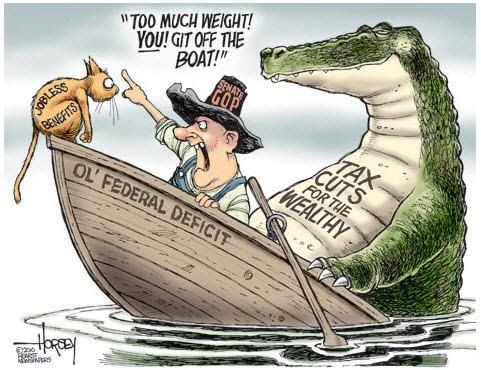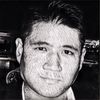
President Donald Trump promised to make decisions that would benefit American workers and families but his tax “reform” plan would actually hurt our economic growth by adding trillions of dollars to the federal debt reducing long-term economic growth. Trump’s plan heavily favors the rich, will expand the deficit, and drive up interest rates as the federal government is forced to increase borrowing. Despite the modest cuts for working families, analysts doubt that it’s enough to encourage enough spending that would result in economic growth and rising wages.
Across Middle America, people feel that they are on the outside looking in at the prosperity created by globalization and technological transformation. They suspect that the game is rigged; that the deck is stacked against them. During the 2016 presidential campaign, many of these people bought into President Trump’s brand. Rather than being a champion for working Americans, Trump’s tax plan shows that the president favors wealthy corporations ― including the profits of his business empire.
The president will give $600 billion in tax cuts over the decade, mostly to wealthy Americans ― when the rich have accumulated more wealth than at any time in the nation’s history. Trump’s proposal includes a huge cut in the corporate tax rate, from 35 percent to 15 percent, a huge windfall for wealthy corporations, in order to “make the United States more competitive.”
The Trump administration argues that deep cuts in corporate taxes will ultimately pay for themselves with a surge of new business and job creation. The so-called tax reform plan is looking more like a tax cut plan, showering taxpayers with rate reductions without offsetting the full cost by closing loopholes or making up the difference in taxes elsewhere. Such a plan would add many billions of dollars to the national debt, in exchange for the largest redistribution from the poor and middle class to the wealthy in modern history.
Secretary of the Treasury Steven Mnuchin argues that an ambitious tax cut would unleash businesses that now feel constrained by one of the highest corporate tax rates in the world. The idea is that corporations would be freed to build plants and create jobs in the United States instead of in foreign countries and would bring home money that currently is sheltered overseas. However, there’s simply no empirical linkage between tax cuts and growth to support this theory. Corporations are now using a large portion of their profits ― currently at record highs ― to buy back their shares of stock and to buy other companies in order to raise their stock prices. There’s no reason to suppose they’ll do any different with even more profits.
“The president will give $600 billion in tax cuts over the decade, mostly to wealthy Americans...”
The White House believes that these tax cuts will generate enough new revenue to wipe out any increase in the budget deficit. This is supply-side “trickle-down” nonsense. We’ve seen this movie before and we already know how it ends. First, nothing trickles down. The large tax cuts on the wealthy enacted by Reagan in the 1980s and Bush in the 2000s enriched those at the top – but the wages of the bottom 60 percent went nowhere. Second, such tax cuts produce massive budget deficits. Under Ronald Reagan and George H.W. Bush, the federal budget deficit grew exponentially. It took Bill Clinton’s administration to get a balanced budget. Then, under George W. Bush, what happened? The deficit expanded again. Trump will repeat all this on a much larger scale.
Independent analysts say Trump’s proposals will balloon the federal government’s deficit at the same time that spending on the defense budget and entitlements like Medicare and Social Security are on course to soar. The nonpartisan Tax Policy Center projects that it will reduce federal revenue by $2.4 trillion over 10 years, with nearly half of the tax cuts going to the highest-income one percent of households, and add about $7.2 trillion to the national debt over the next decade. The president is on a collision course with fiscal conservatives in Congress. His tax plan will either require huge cuts in programs for the poor, or additional tax revenues from the rest of us.
Many economists agree trickle-down economics is not the way to resolve the slow growth of the U.S. economy and the social disaffection of Americans -– important factors which gave rise to Trump. In 2015, an income inequality study by the International Monetary Fund found that increasing the income share of the top twenty-percent results in lower growth – that is, when the rich get richer, benefits do not trickle down. Further, the Congressional Research Service reviewed tax cuts since 1945 and found no evidence they generate economic growth.
This proposed plan will leave a huge burden for working Americans. Economists say due to the anticipated rise in interest rates as a result of decreased revenue and an accelerated national debt, investors from around the world are likely to pour money into Treasury bonds. Thus, bidding up the value of the dollar, which would increase the trade deficit as American exports become more expensive in the rest of the world and imports become cheaper. This in turn could cost America jobs.
Don’t fall for Trump’s tax plan. American ingenuity, innovation, and empowerment to grow small business are what stimulate economic growth, not tax cuts for the wealthy. Trickle-down economics has proven itself a cruel hoax. It rewards people at the top who least need it and hurts those below who are in greatest need.
